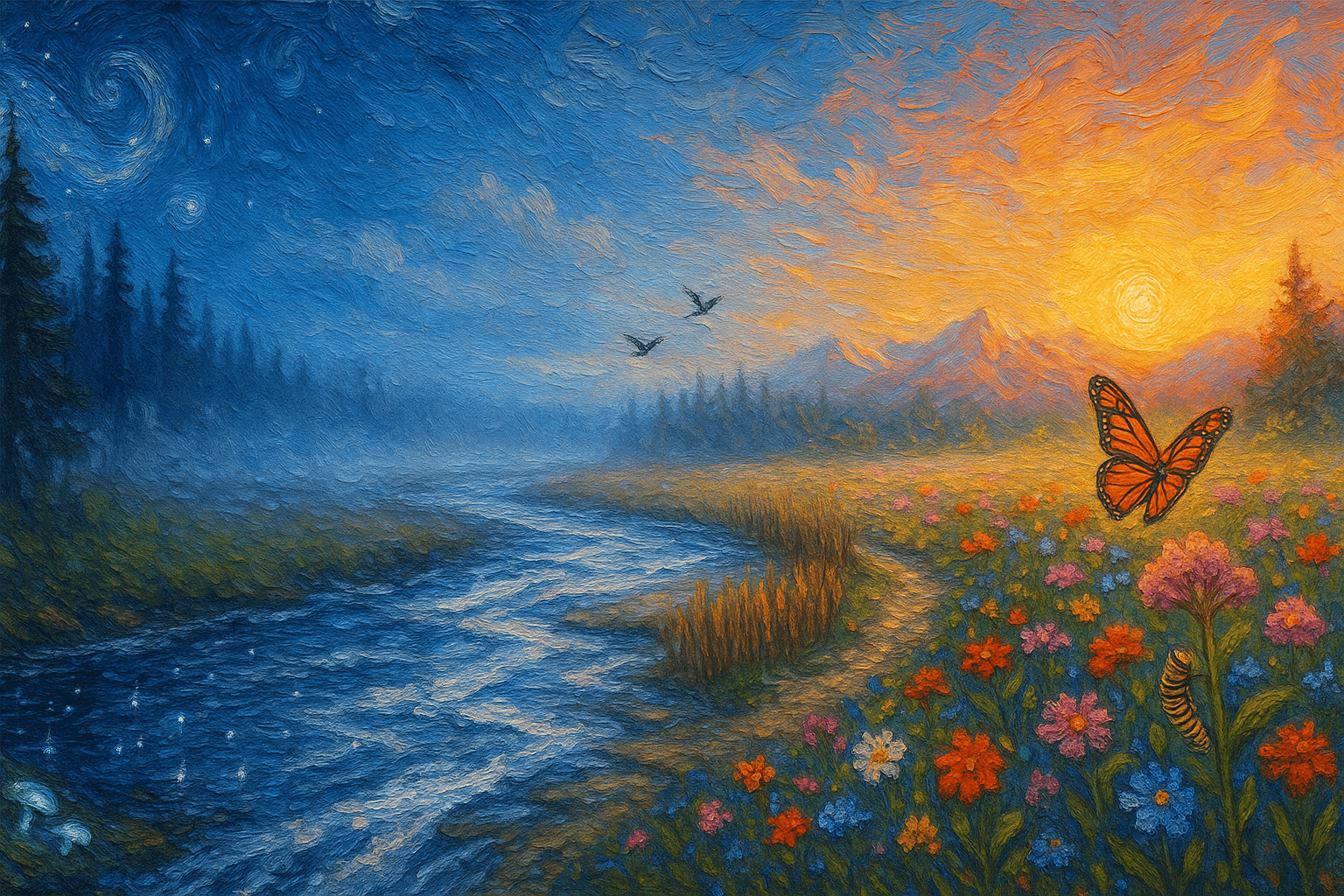Where Vision Becomes Brushstroke, Dream Becomes Art

"I dream my painting and I paint my dream." — Vincent van Gogh
Dreaming as Blueprint, Painting as Proof
At first glance, van Gogh’s line fuses intention with action: imagination drafts the plan, and the hand ratifies it on canvas. The saying proposes a circular vow—what he envisions, he renders; what he renders, he then re-envisions—so that dream and deed refine one another in perpetuity. Rather than escapism, dreaming becomes a disciplined prelude to making, a rehearsal that grants form to feeling. In this light, the quote is less about passively waiting for inspiration than about cultivating an inner studio where images are tried on before they meet paint. That inner studio, however, only fulfills its promise when it is joined to the outer one—the easel, the pigments, and the routine that translates vision into touch.
Van Gogh’s Letters and Working Method
To see how this credo lived in practice, his correspondence reveals a craftsman who pre-visualized relentlessly. In Letters to Theo (ed. 1914), he sketches intentions before sketching lines, describing schemes for the Sunflowers and the Bedroom in Arles as if walking through them in advance. He often worked in series, returning to motifs until the dream clarified through repetition. Crucially, those series were not copies but conversations with an idea, where each version nudged the next. The imagined picture set the initial coordinates; the painted result, in turn, altered the map. Such cycles reveal a feedback loop at the heart of his process.
The Creative Feedback Loop
From there, making reshapes dreaming. Painters discover surprises in pigments, light, and texture that no plan fully anticipates; the hands teach the mind what it could not foresee. In this spirit, Picasso reportedly remarked, "Inspiration exists, but it has to find you working," a reminder that execution is not the end of dreaming but its catalyst. Thus, practice becomes a partner to vision: each brushstroke proposes a new hypothesis, and the next dream replies. This iterative dialogue moves art from wishful thinking to evolving discovery, where mistakes are not detours but trail markers for the next ascent.
What Dreaming Does for Creativity
Moreover, science suggests why alternation between envisioning and making can be potent. Sleep research finds that dreams loosen associative networks, enabling remote connections. Wagner et al., Nature (2004), showed that sleep doubles the rate at which people discover hidden rules in puzzles; Cai et al., PNAS (2009), found REM sleep selectively boosts creative problem solving through novel associations. Consequently, dreaming may stock the mind’s palette with unexpected pairings, while daylight labor selects and shapes them. Van Gogh’s formula anticipates this rhythm: let the night propose, and let the day compose.
Translating Inner Vision into Color
Consider next how inner images become formal choices. Van Gogh used color as emotion’s syntax, tilting hues until feeling spoke plainly. In a letter from Arles (Sept. 1888) about The Night Café, he wrote that he tried "to express the terrible passions of humanity by means of red and green," showing how a dreamed mood directs a painted scheme. Similarly, the whorled sky of Starry Night (June 1889) reads like weather inside the mind, yet it is anchored by the village silhouette—dream balanced by structure. In this way, imagined affect becomes concrete through line, palette, and rhythm.
Art Amid Turmoil
Yet we should resist romanticizing suffering. During his year in the asylum at Saint-Rémy (1889–1890), amid illness and constraint, van Gogh produced over 140 paintings. The window view was real; the turbulence was inner. Starry Night, Wheatfield with Cypresses, and the olive groves show how disciplined craft can channel disorder without being swallowed by it. Thus, the maxim is not a plea to live in dreams but a practice of refining them under pressure. Limits—of health, place, or means—became frames that intensified focus rather than cages that crushed it.
Applying the Principle Today
Finally, the line offers a method. First, cultivate vision: keep a dream or idea notebook; sketch thumbnails each morning to externalize night-thoughts. Next, honor the making: set brief, repeatable constraints—a palette of three colors, a 30-minute draft—so momentum outruns hesitation. Periodically step away; incubation renews insight. For micro-dreaming on demand, borrow Salvador Dalí’s "slumber with a key" technique (50 Secrets of Magic Craftsmanship, 1948): drift until a small clink wakes you at the edge of sleep, then capture the image. In short, dream deliberately, and then work until the work dreams back.